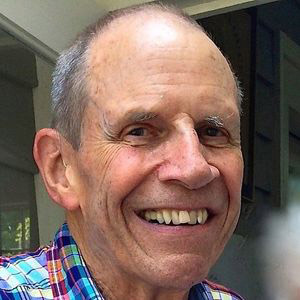"I find hope in the work of long-established groups such as the Arms Control Association...[and] I find hope in younger anti-nuclear activists and the movement around the world to formally ban the bomb."
IN MEMORIAM: Tom Halsted (1933-2017) Former Executive Director, Arms Control Association
Thomas A. Halsted, one of the early leaders of the Arms Control Association and a veteran of the U.S. Arms Control and Disarmament Agency (ACDA) in the 1970s, died of cancer on Oct. 7 in Gloucester, Massachusetts. He was 83.
 Halsted was hired as the first executive director of the Arms Control Association shortly after its founding in 1971. He established the organization's role as a key source of information and analysis on the nuclear arms control and nonproliferation and launched the Arms Control Association Newsletter, which would later become Arms Control Today (ACT).
Halsted was hired as the first executive director of the Arms Control Association shortly after its founding in 1971. He established the organization's role as a key source of information and analysis on the nuclear arms control and nonproliferation and launched the Arms Control Association Newsletter, which would later become Arms Control Today (ACT).
After serving in the U.S. Army from 1954 until 1961, Halsted worked in the State Department’s Bureau of Intelligence and Research and later at ACDA. He served for four years as the Council for a Livable World’s national director before he joined the staff of Sen. Alan Cranston (D-Calif.) as a legislative assistant.
In January 1972, at age 38, Halsted became the Arms Control Association’s executive director. Under his leadership, the newly formed organization, with a board of directors consisting of many former U.S. officials and negotiators, jumped into the national debate on
how to slow and reverse the U.S.-Soviet nuclear arms race and curb the spread of nuclear weapons.
With Halsted at the helm, the association held workshops and briefings for reporters and congressional staff and published analyses and commentaries on the 1972 Strategic Arms Limitation Talks (SALT); controversial, new strategic nuclear weapons systems such as the B-1 bomber and the proposed MX missile; and the newly in-force nuclear Nonproliferation Treaty (NPT).
Striking a theme that the organization still maintains, Halsted consistently wrote and spoke about the importance of more energetic and hard-hitting measures to reduce nuclear arsenals. In the spring 1972 edition of the Arms Control Association Newsletter, Halsted welcomed the SALT agreement, but warned that “the existence of quantitative controls on some weapons systems…will undoubtedly provide enormous incentives to go all-out on a qualitative arms race and on the procurement of those non-prohibited weapons systems.”
Writing on behalf of the organization that year, Halsted deplored the long delay in achieving concrete results and called for follow-on negotiations to take on additional issues. He called for “a moratorium on further qualitative and quantitative strategic weapons construction,” an immediate halt to all nuclear testing while negotiations on a comprehensive nuclear test ban treaty were pursued, and limits on ballistic missile flight testing to inhibit the development of multiple, independently targetable re-entry vehicles (MIRVs).
He would later write in Arms Control Today that the 1974 Threshold Test Ban Treaty, which banned nuclear explosions with yields larger than 150 kilotons TNT equivalent, “dealt a serious setback to the cause of non-proliferation of nuclear weapons” because it “permits continued testing of most of the weapons each side is likely to want to develop in the future” and failed to outlaw so-called peaceful nuclear explosions.
In 1975, Halsted organized an Arms Control Association conference in Europe of nongovernmental experts and governmental representatives ahead of the first NPT review conference and attended the conference in Geneva that year. His June 1975 report in Arms Control Today warned of the challenges facing the NPT. “It must be remembered, however, that those 96 states that have ratified the NPT still do not include in their number the half dozen or so most likely to retain an interest in acquiring nuclear weapons…. The Treaty cannot stop proliferation, only make it a little harder to facilitate.”
In words that still resonate in today’s nuclear debates, Halsted returned from that first NPT review conference urging the nuclear powers to “set a better example. They can and must do more…toward ending nuclear tests, reversing the qualitative strategic arms race, and adopting some form of commitment not to use nuclear weapons against those who have agreed to forswear them.”
“We live in a world of mutual deterrence. Both sides have so many nuclear weapons that if one side were to use them that would insure its own destruction. This deterrence works at many levels and it would work at much lower levels of nuclear arms than both sides have today,” Halsted told The Washington Post in February 1977.
Four decades later, we still live in a world of mutual deterrence and in a world in which there are still far too many nuclear weapons and too many risks than are acceptable.
Halsted is survived by Joy, his wife of 62 years; his son Tom; daughter Beth Paddock; four grandchildren; and three siblings, Nell Moore, Charles Halsted, and Bella Halsted.
The Arms Control Association family, including current and former staff members, interns, members of the board, and Arms Control Today contributors, will miss our friend Tom Halsted and appreciate the legacy of arms control and disarmament education and advocacy he created.
